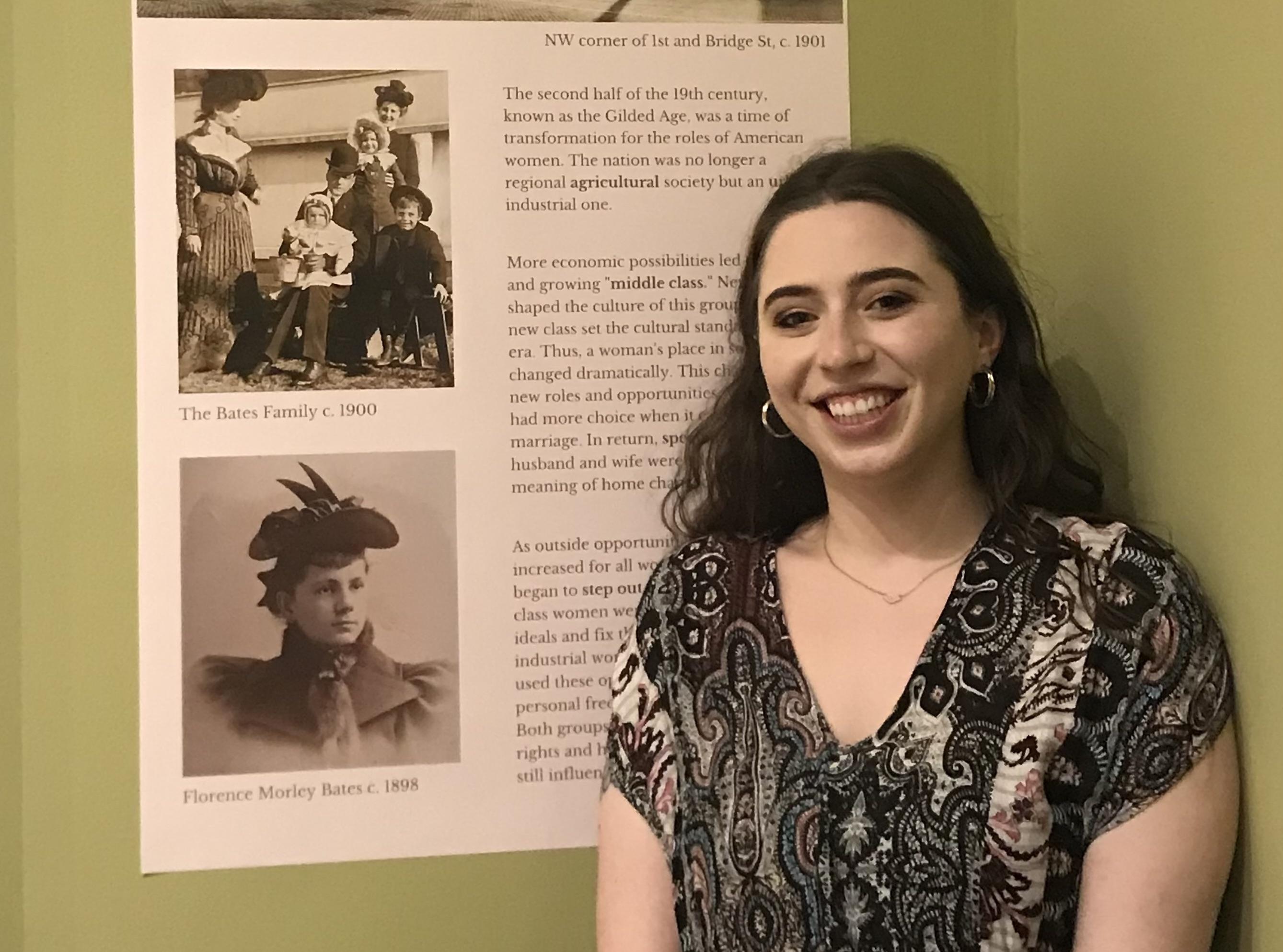SUNY Oswego May 2022 history graduate Gabrielle Belmont recently curated her first collection, titled “The Perfect Woman: Women of the Gilded Age,” on display where she recently interned, the Richardson-Bates House Museum in Oswego.
Belmont hopes to someday work in a museum and curate collections full time, and the project equipped with a donation of items from Bates family members might represent the first step toward this dream. The collection, with items donated by Sarah T. Barber (the granddaughter of Florence Morley Bates and daughter of Sally Bates), takes an important look into the life and role of women in the north in an industrious period in Oswego.
“As you look through the pictures, you will see that I use Florence's life and personal belongings a lot in the exhibit to represent the roles and changes of the growing middle class (which includes her relationships with her domestic servants),” Belmont said. “The collection also contained belongings and pictures of the other woman who lived in the original family – Harriet Richardson-Bates and Naomi Richardson. I used their story and belongings similarly to learn about their lives and place in society as higher-class women. They are a classic example of an upper-middle-class family who benefitted from the industrial activity of Oswego.”
Learning from history
Many of the modern roles that women fill today were formed or fortified during the Gilded Age, which historians note as the second half of the 19th century. Belmont notes that while the family featured in the exhibit showcases the role of upper-class women in the Gilded Age, she also used other women in Oswego to showcase other roles that women filled, such as factory workers and domestic servants, to get a full picture of not only what women did, but how they were also impacted by their class.
“I really think gender and class co-exist with each other,” Belmont said. “In my opinion, I think it’s hard to separate them, especially in a time like the Gilded Age when stratification was so prevalent.”
Using this collection of local history, Belmont explored women’s attire, family structure and roles in society. Belmont encourages individuals who view this collection to take note of how this era paved the way for the modern era.
“The Gilded Age serves as the foundation of modern society,” Belmont said. “The modern housewife comes from this time, the hardworking woman comes from this time – the dichotomy of roles was going on during this time. My biggest goal is to show how this era still impacts modern society today.”
Historical Port City
Oswego, a booming Port City during the Gilded Age, hosts many lessons that individuals near and far can learn from. Belmont notes both her interest and gratitude for being able to curate a collection in the city of Oswego, both due to its rich history during this era, as well as it being a match to her interests during this time in American history.
“My purpose as a future American historian and as a hopeful curator is to teach others about the nations in ways that can be entertaining, truthful and insightful,” Belmont said.
“The transformations made during the Gilded Age still impact us during this time, and through that, we can learn from the good and bad,” Belmont noted. “Through gender roles and this exhibit, in particular, I aimed to connect the drastic changes to how it has impacted a women's place in society by both the expectations and pressure put on women, the struggles faced by women of lower classes, but also the empowerment and drive in women that still fuels the fight for equality seen today.”
Belmont expresses her gratitude for institutions like the Richardson-Bates House Museum, which is owned and run by the Oswego County Historical Society and works to preserve and protect local history.
“Working with this collection and interning at a local museum helped me realize how looking at local history and individual lives is vital to understanding the bigger picture and greater narrative,” Belmont said. “Tangibles such as artifacts and archives are key to learning from and acting as the physical representations that help history come to life. Museums — unless they are big institutions — are often overlooked, but museums are critical for teaching others about history in a way that can be fun but also enlightening.”
View the collection
The Richardson-Bates House Museum is located in the city of Oswego at 135 E. 3rd Street. Currently, hours of operation are 1 to 5 p.m. on Thursdays, Fridays and Saturdays from April through December.
To learn more about the Richardson Bates-House Museum and current exhibits, visit the Oswego County Historical Society website.




